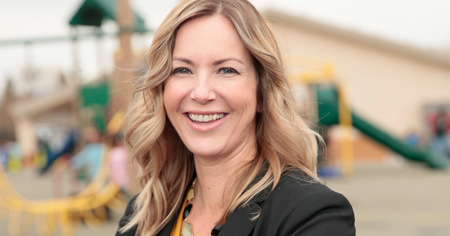In the article "Reopening: How SEL for Equity Can Move Us from Surviving to Thriving", author Catherine MacDonald Burns, National Training Director, Girls Leadership, offers readers insight on where to start.
The unknowns, MacDonald Burns says, are innumerable, the risks are real, and the concept of "normal" is no longer applicable. She notes afterschool professionals must take into account the social and emotional impacts of what pandemic life has meant for youth.
"It's our job to hold a space that is not only clean and safe, but also one that will promote equity, community, empathy, and healing," MacDonald Burns writes. "We're going to have to be strategic and intentional: social-emotional learning and healing-centered engagement cannot be 'nice-to-haves,' but they must be the drivers of how our spaces operate. Now is a vital time to center these needs in the service of all our youth."
MacDonald Burns knows picking a starting point for many isn't going to be an easy task. It's going to take more than a few small adjustments—it's going to require a cultural shift.
"The silver lining to the time we've spent away from our community spaces is that breaks create natural transitions," said McDonald Burns. "If your classroom, school, or community-based organization hasn't had an emphasis on social-emotional learning or healing-centered engagement, now is the time to pivot and reimagine."
The article prompts readers to consider three questions in order to shift to a more collectivistic practice:
- How are we addressing compassion fatigue and burnout among our staff?
- How are we promoting a healing-centered space?
- How are we assuring that we create structures and systems that promote equitable outcomes for all students?
Instead of placing old expectations on our new reality, MacDonald Burns asks readers to step back and ponder: "What if?"
"There will be urgency to address the academic fallout of being out of school. It's important to know that expecting academic growth without deliberate measures to ensure emotional safety and stability for all students is not only unrealistic, but harmful," she writes. "This is especially necessary for us to understand when serving our Black students, who have been disproportionately impacted by the pandemic and are also experiencing the ongoing and heightened impact of anti-Black racism."
Using Maslow's Hierarchy of Needs, MacDonald Burns describes how if the focus is exclusively on the very top of the pyramid (self-actualization, a.k.a. academic achievement), then the field is missing the bigger picture of what youth need to reach that place.
"To tell a student who is navigating housing, food insecurity, or oppression of their rights that their grades should be their number one priority is not addressing the problems preventing them from academic success—it's only further serving to alienate and isolate them," MacDonald Burns said. "Schools cannot operate as islands; we need to be in partnership with organizations in our communities that support the most immediate needs of our students so we can focus on creating opportunities for them to thrive."
MacDonald Burns recommends starting with awareness of the psychological impact.
"Thriving, not just academic success, should be the name of our game. As we re-open, students will be hungry for those love and belonging and esteem needs, and this is entirely within our locus of control," she writes. "We have to start with an awareness of the psychological impact on ourselves and our students of being told for months that all people are dangerous and the only safety is in isolation."
Also key will be building anti-racist practices and bias intervention into policies, protocols, and professional development.
"Imagine the love and belonging and esteem needs we can meet when we interrupt our systems that are leading to inequitable outcomes, and prioritize student well-being, connection, relationships, agency, and leadership," MacDonald Burns writes, noting that culturally responsive and trauma-informed practices should also be included. "As these needs are met, we create more space and opportunities for self-actualization. Students can focus on achieving at their highest potential when they know they are heard, seen, valued, and belong to their community."
To read the entire article, visit Girls Leadership.
Courtesy of NAA.




